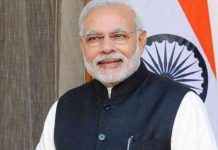It was the October 15, 2017 issue of Tehelka when we wrote in our cover story ‘Awaiting Stimulus’ that “Modi Government is planning stimulus to boost the economy”. Less than a month from then, Prime Minister Narendra Modi’s Government has unveiled a nine trillion plan of which seven trillion has been earmarked for road projects and two trillion would be infused into public sector banks to shore up the sagging economy. For a media house, there can’t be a better calling than its story setting the government’s agenda.
 The latest announcement by the Government says that it has decided to build 83,677 km roads entailing an investment of 6.92 lakh crore over the next five years. It has already cleared 5.35 lakh crore for the Bharatmala Road Project under which around 34,800 km of roads including in coastal and border areas will be constructed. This is sure to spur the economy and give it a boost. As the opposition was repeatedly hitting the government on the downtrend in the economy and shrinking jobs, the new umbrella programme ‘Bharatmala Pariyojana’ is also aimed to generate 14.2 crore mandays of jobs.
The latest announcement by the Government says that it has decided to build 83,677 km roads entailing an investment of 6.92 lakh crore over the next five years. It has already cleared 5.35 lakh crore for the Bharatmala Road Project under which around 34,800 km of roads including in coastal and border areas will be constructed. This is sure to spur the economy and give it a boost. As the opposition was repeatedly hitting the government on the downtrend in the economy and shrinking jobs, the new umbrella programme ‘Bharatmala Pariyojana’ is also aimed to generate 14.2 crore mandays of jobs.
Bharatmala Project
The Bharatmala project will include economic corridors (9,000 km), inter-corridor and feeder route (6,000 km), national corridors efficiency improvement (5,000 km), border roads and international connectivity (2,000 km), coastal roads and port connectivity (2,000 km) and Greenfield expressways (800 km). The government has also identified new routes between economically important cities that would be longer in terms of distance but will reduce travel time as the new routes would avoid congested roads and small cities. Roads will be built along the borders with Nepal and Bhutan. Funds for the new project would come from the market (2.09 lakh crore), Public-Private Partnership (1.06 lakh crore) and asset recycling of NHAI’s toll assets while the remaining amount would be financed from the Central Road Funds, Toll-Operate-Maintain-Transfer monetisation proceeds and toll collections.
Infusion into Banks
Alongside, the Government has come out with another ambitious plan to pump in 2.11 lakh crore capital over the next two years into public sector banks. We all know that these public sector banks are plagued with alarming non-performing assets and because of these NPAs, these banks are shy of further lending. The infusion of funds into the public sector banks would enable them to lend to business and industry to revive private sector investment and boost economy. The funds to be pushed into the banking system would come from the budgetary provisions of 18,139 crore and the sale of bonds totalling 1.35 lakh crore. The balance would be raised by these public sector banks by diluting the government’s equity share. The government’s capitalization package for public sector banks is likely to provide a strong booster dose to the capital-starved banks. The infusion of funds into public sector banks should help revive growth momentum. The stressed assets of close to 10 lakh crore had led the banking sector to a near crisis and it was wary of lending fresh loans. The bank credit growth had slipped to a 60-year low of just five per cent this April. The banks have been seized of the twin balance-sheet problem and it was only late last year that a new bankruptcy law was introduced and Reserve Bank of India asked banks to invoke insolvency proceedings in the case of 50-odd accounts.
Strong fundamentals
Interestingly, while the Modi Government has come out with Rs nine trillion plan to lift the economy, the Finance Ministry has defended the state of the economy with Finance Minister Arun Jaitley asserting at his press conference that it was on strong macroeconomic fundamentals. The key data indicators such as low inflation, comfortable current account and fiscal deficits, point towards a positive outlook for GDP growth in the coming quarters. There is expectation of very good growth from second quarter of current year itself. Significantly, this year the Government has already collected 30,000 crore from disinvestment and is on way to even exceed the 72,000 crore targets for the year. In fact, the gross FDI flows to India in 2016-17 amounted to $60.2 billion, as compared to $55.6 billion in 2015-16 and $45.1 billion in 2014-15.
Rekindling hope for ‘Achhe Din’
The result of the new stimulus package is that it has instantly brought cheers in the stock market and instilled new confidence in the economy. The current euphoria following the stimulus may also help the ruling party calm down the GST-stung businessmen and boost the economy. The bank recapitalization proposal is a positive move that should go a long way in strengthening the banking system. Another positive in this development is the government’s admission that all is not well with the economy and the stimulus was aimed at its revival. The initial stand of the government was that the opposition was trying to spread pessimism. A yet another positive is the flexibility shown by the Union Finance Minister, Arun Jaitley, who was initially not in favour of any stimulus package fearing that it will further widen the fiscal deficit. The direct benefit of the stimulus would be for the micro, small and medium enterprises (MSME) sector as the plans are for a guaranteed payment to MSME suppliers to public sector units within 90 days and end to end solutions for credit delivery. The new road projects would mean more labour absorption in the MSME sector with creation of 14.2 crore man days of work. For millions of job seekers, there is a ray of hope and chances of good times at long last.
Like the great bard and blind optimist, Robert Browning who penned “God’s in his Heaven, All’s right with the world”, one is tempted to assume that the new measures by the Modi Government will boost the economy. Let us hope that the promised “ache din” which were hitherto elusive, may now actually become a reality and rekindle the dreams of billions.
letters@tehelka.com













